Agates in Kentucky are a true treasure for anyone who loves rocks and exploring the outdoors. These colorful stones are known for their beautiful bands of red, orange, brown, and even blue, and they can be found in many places across the state.
Rockhounds and collectors travel from all over just to get a chance to add a Kentucky agate to their collection. The best part is that you do not need fancy tools or a lot of experience to start looking. All you need is a sharp eye, patience, and a love for adventure.
We will guide you through some of the best spots in Kentucky where agates are found and give you simple tips on how to spot them in creeks, gravel bars, and fields.
Get ready to learn where to go, what to look for, and how to start your own agate hunting journey.
What is Kentucky Agate?
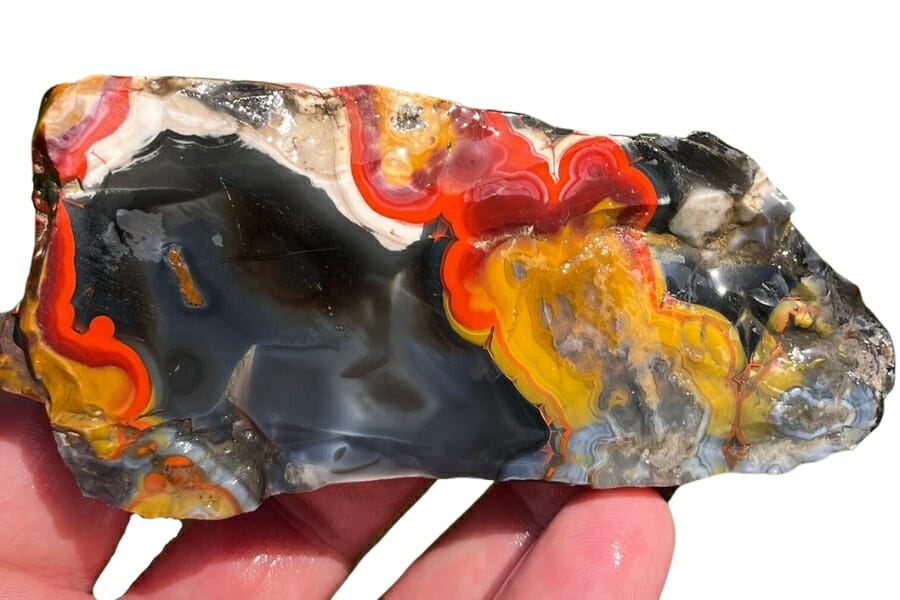
Agate is an incredibly cool rock that’s a type of quartz. Its stunning bands and patterns of colors dancing inside make it interesting. These bands form over a long time when tiny minerals trickle into gaps in older rocks, layer by layer.
Agates are usually found near volcanic areas or places with ancient lava flows. They love hiding in the cracks and cavities of these rocks. But here’s a fun fact: You don’t have to travel to some distant volcano to find them. They’re closer than you think!
Kentucky agate, our state’s special kind of this gem, is a showstopper with its amazing combo of red, black, and white colors. It kind of looks like fiery clouds trapped inside a rock. With this kind of beauty, it’s no wonder why agate’s price and value can soar high in some cases.
But before we share with you where to mine for agate in Kentucky, it would help to know what the different kinds of these wonders are:
Blue Lace Agate
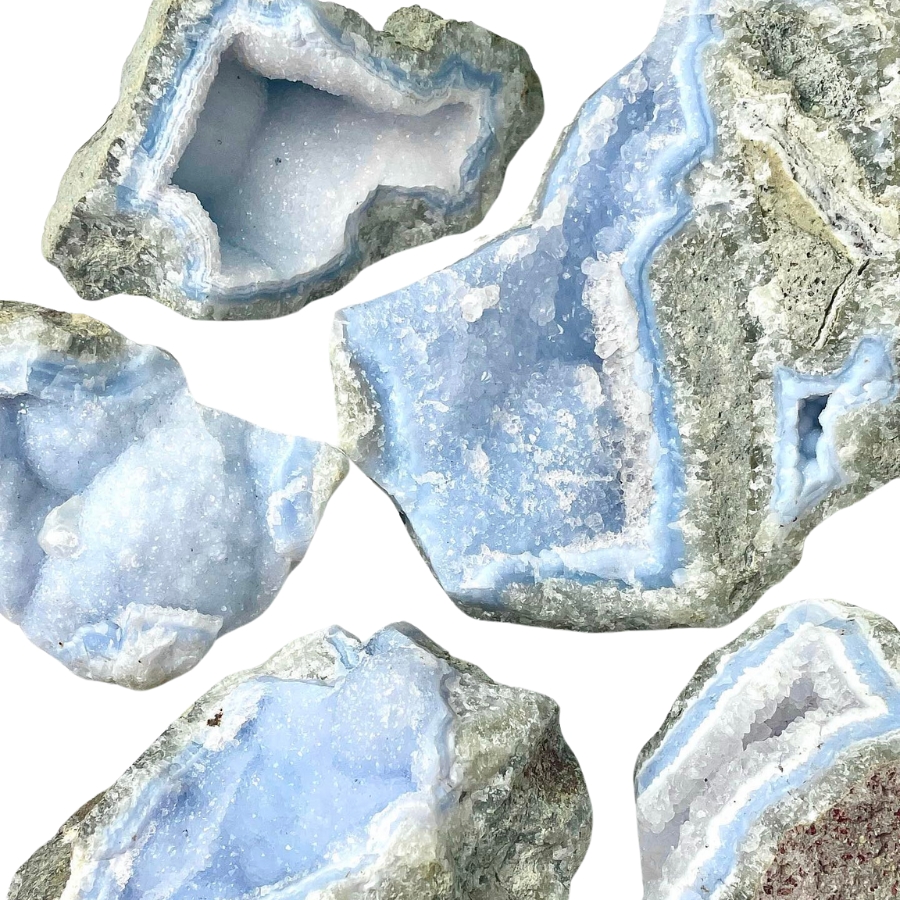
Blue lace agate is like the soft, sky-blue waves with lines that swirl and twist like delicate lace.
Its pattern comes from slow-forming layers of quartz, which create those beautiful, lace-like bands.
The bands of this agate type are often in shades of light blue, white, and sometimes a bit of grey. It’s different from other agates, which usually have more intense colors and stronger patterns.
The value of blue lace agate lies in its soft, tranquil look and the feeling of calm it brings. It’s often used in jewelry or as a decorative stone.
If you want REAL results finding incredible rocks and minerals you need one of these 👇👇👇
Finding the coolest rocks in isn’t luck, it's knowing what to look for. Thousands of your fellow rock hunters are already carrying Rock Chasing field guides. Maybe it's time you joined the community.
Lightweight, mud-proof, and packed with clear photos, it’s become the go-to tool for anyone interested discovering what’s hidden under our red dirt and what they've already found.
Join them, and make your next rockhounding trip actually pay off.
What makes it different:
- 📍 Find and identify 140 incredible crystals, rocks, gemstones, minerals, and geodes across the USA
- 🚙 Field-tested across America's rivers, ranchlands, mountains, and roadcuts
- 📘 Heavy duty laminated pages resist dust, sweat, and water
- 🧠 Zero fluff — just clear visuals and straight-to-the-point info
- ⭐ Rated 4.8★ by real collectors who actually use it in the field
Moss Agate
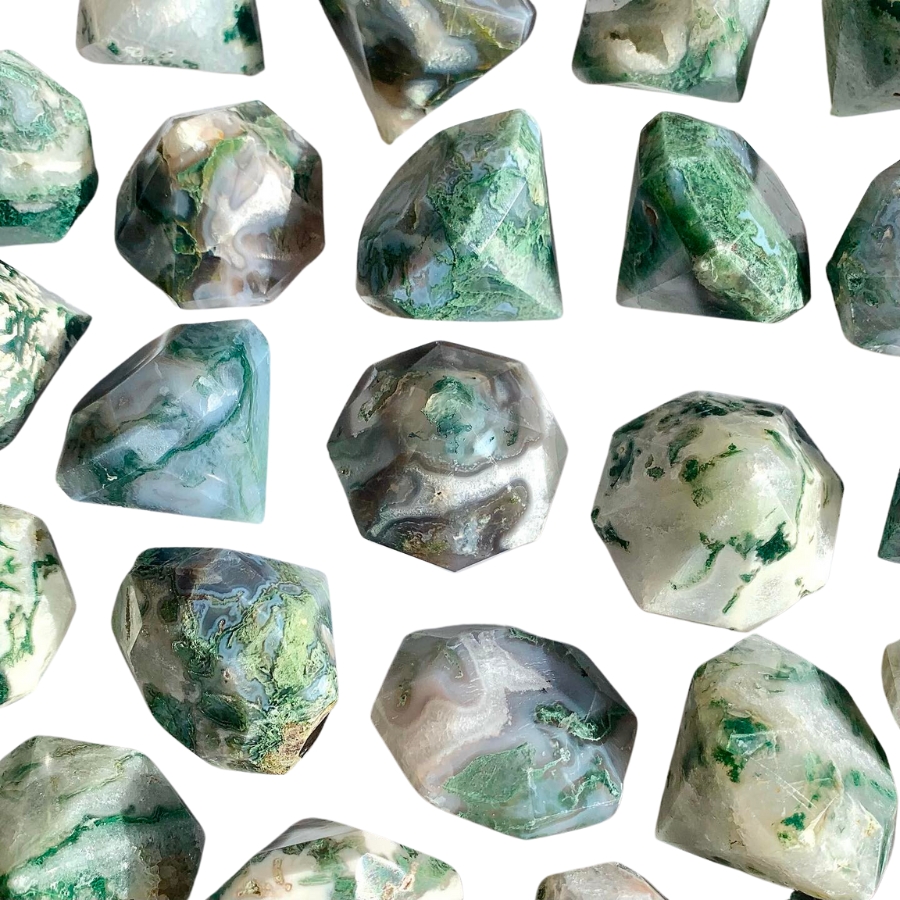
Instead of having the typical banding for which the different types of agates are known, moss agate has green inclusions that look like moss or trees.
These green patterns aren’t real plant material, though. They’re minerals like chlorite or iron oxide.
In some cultures, this type of agate is known as the “gardener’s stone” because of its green, plant-like appearance. It’s believed to help plants grow.
The price of moss agate can vary. It’s often quite affordable, but the more distinct and picturesque the green patterns, the more it might cost.
Fire Agate
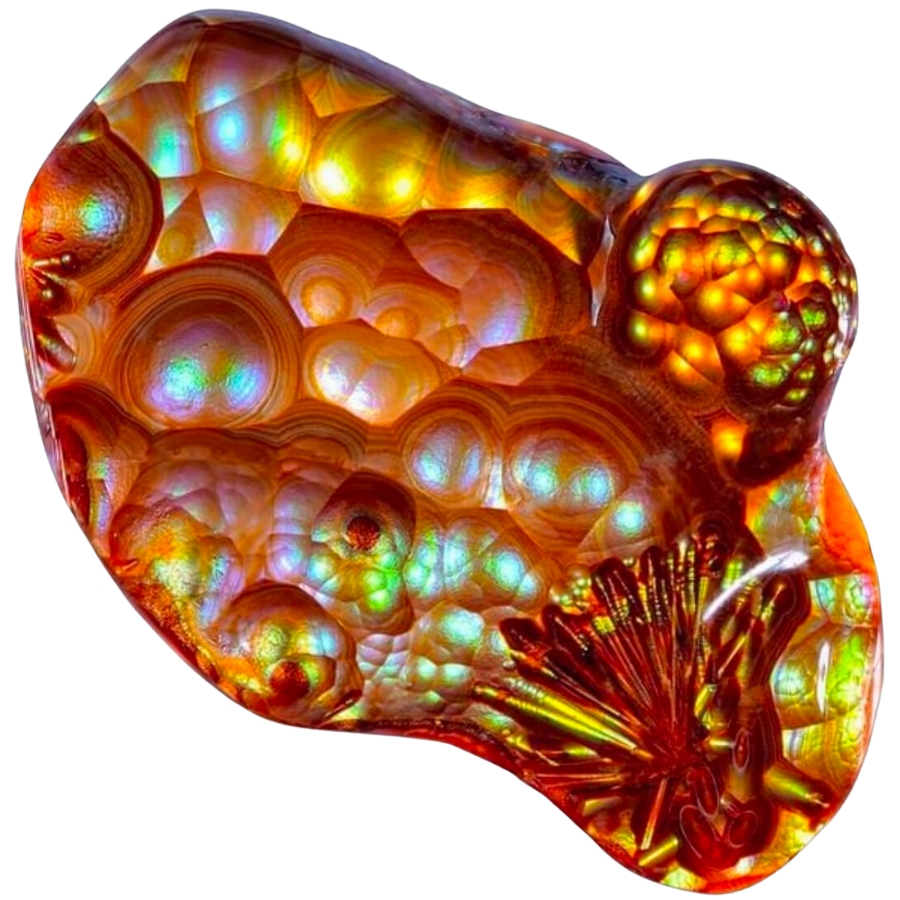
Fire agate is known for its incredible colors and the way it sparkles like fire. It’s got layers of silica and iron oxide that reflect light, creating a fiery effect.
When you look at fire agate, it’s like seeing flames trapped inside. Its colors can range from reds and oranges to greens and golds, all shimmering under the surface.
You might be wondering, “What is fire agate worth?” Well, its value comes from its rare beauty. The more color and sparkle, the more valuable the stone is.
Its fiery iridescence and lively play of color are used in jewelry pieces that are meant to stand out.
Dendritic Agate
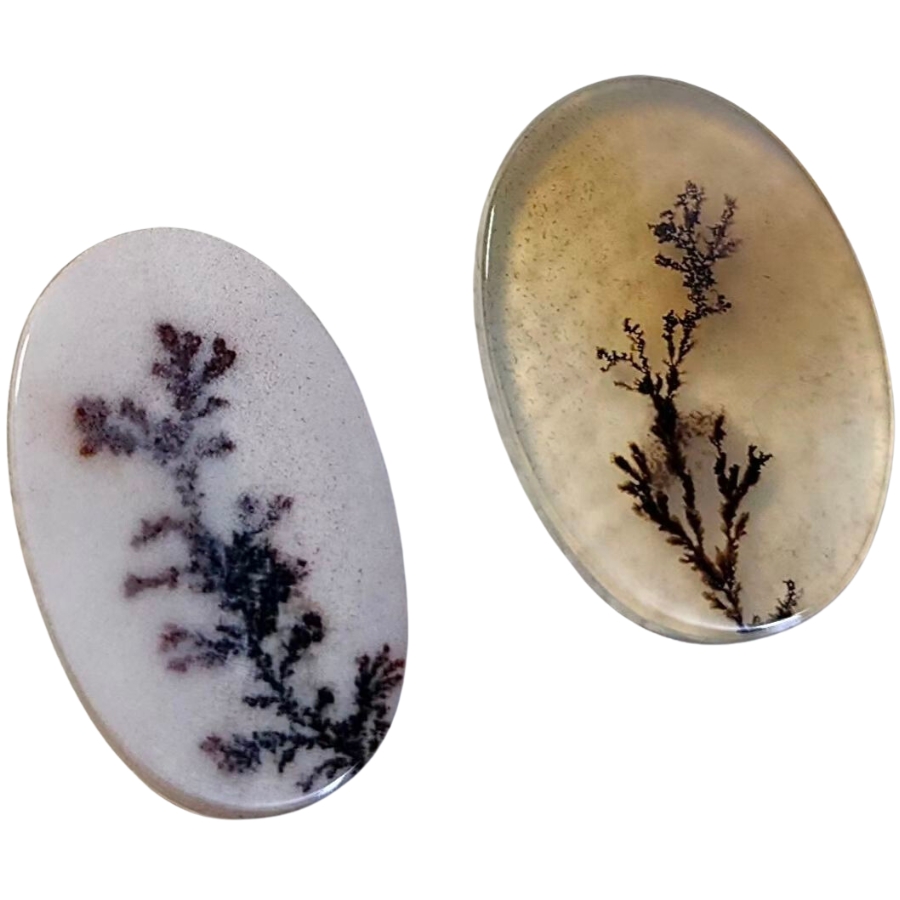
Dendritic agate is known for patterns that look like tiny trees or shrubs. Like moss agate, these patterns aren’t actual plants. They’re made of minerals, mostly manganese or iron oxides.
When you look at a dendritic agate, it’s like peering into a miniature forest or a frosty winter landscape.
The base of the stone is usually translucent to opaque, and the “dendrites”— those tree-like patterns— are often black or brown.
When it comes to how much dendritic agate is worth, it can vary. The more detailed and distinct the patterns are, the more it’s usually valued.
In some cultures, dendritic agate is believed to bring fullness and richness to life.
Crazy Lace Agate
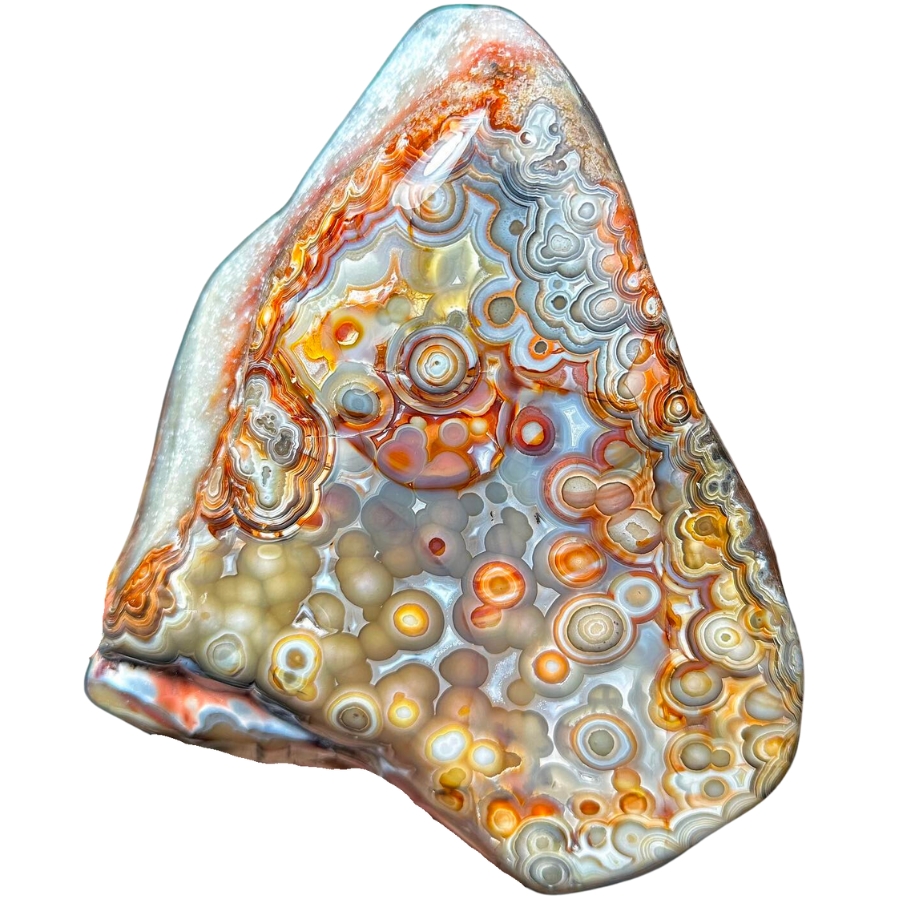
Crazy lace agate is like a party in a rock! It’s got swirls, circles, and all sorts of wild patterns dancing across it.
Its colors can be a mix of red, orange, yellow, and brown, and sometimes even a bit of gray or white.
What makes crazy lace agate stand out is its vibrant and complex patterns. No two pieces are the same. This distinctiveness is a big reason why it’s so valued.
Despite its wild and ‘crazy’ appearance, it’s sometimes called the “Laughter Stone” or “Happy Lace” because of the joy and positive vibes it’s believed to bring.
Laguna Agate

Laguna agate has incredibly sharp and fine banding. It has layers of red, orange, pink, yellow, and sometimes even purple and white all stacked in neat, tight bands.
These bands can form eye-catching patterns, like swirls, loops, and even landscapes.
The different colors of its bands come from various minerals present in the water at the time of its formation.
Laguna agate is considered one of the finest agates in the world due to its exceptional banding. This high regard among agate varieties makes it a prized possession for collectors.
Condor Agate

Condor agate is a real standout. It’s known for its bright, vivid colors and complex patterns.
It has reds, oranges, yellows, and sometimes even blues and greens all swirling together. These colors form in bands or in more random, artistic patterns.
The intensity and variety of its colors is what makes condor agate so special. It’s often used by artists and craftsmen who want to make a statement with their work.
Condor agate’s bold colors and patterns can turn a simple piece of jewelry or art into something really eye-catching.
Fortification Agate (Banded Agate)
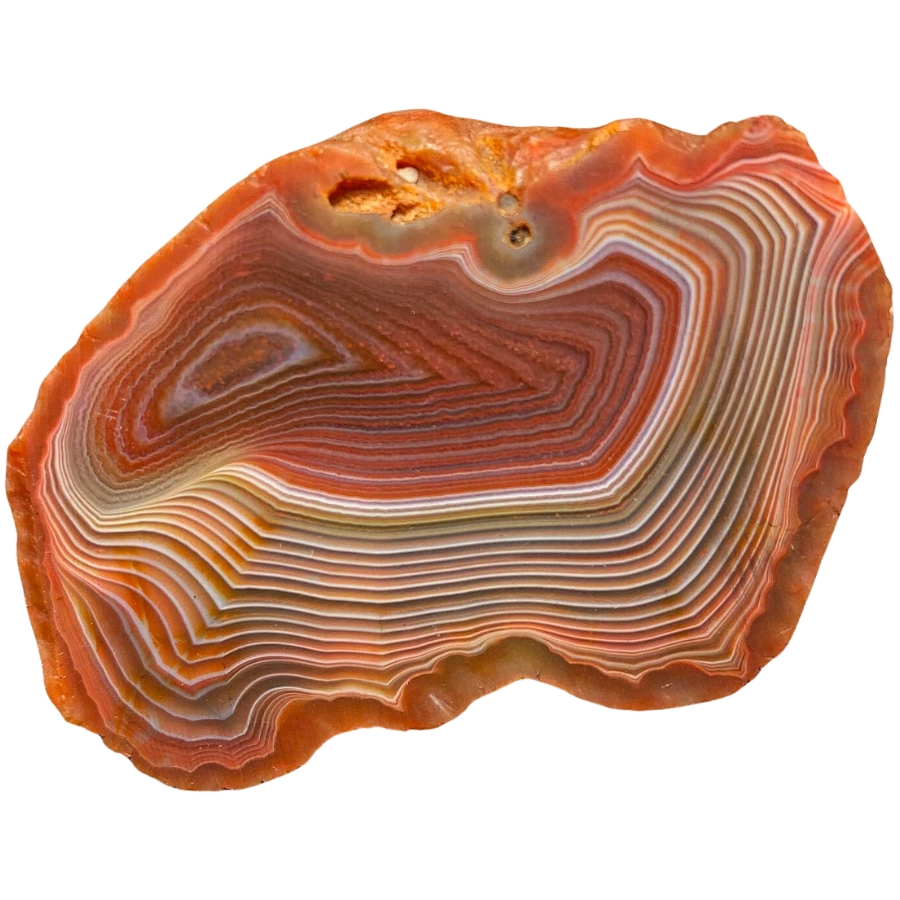
Fortification agate gets its name because the patterns inside it look like the aerial view of a fortified city.
Imagine seeing bands of color forming shapes that look like walls, with sharp angles and curves. They are usually in different colors, making each layer stand out.
If fortification agate is valuable, it’s because of its distinct patterns and colors. Its unique look makes it sought after for jewelry and as a collector’s item.
The clearer and more defined the patterns, the more valuable the stone can be. Some people also believe it can help with relaxation and calmness.
Iris Agate
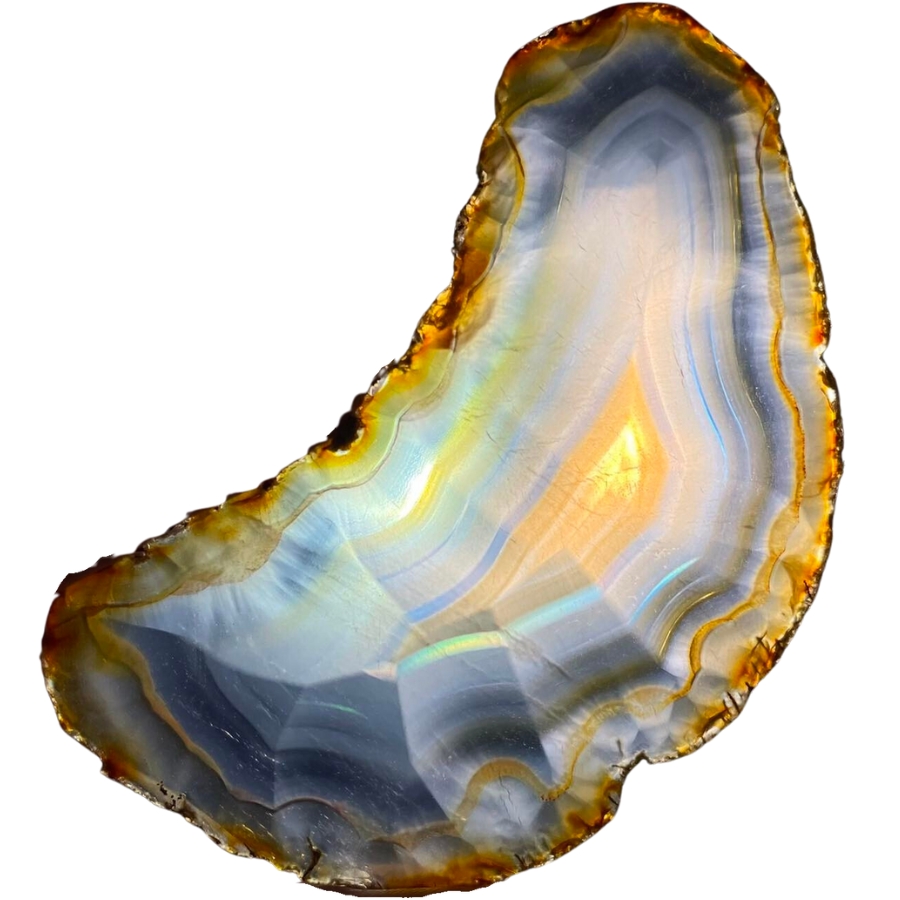
Iris agate looks like a regular agate at first, but when you hold it up to the light, something amazing happens. It shows all these rainbow colors, like light passing through a prism.
This is because it has very thin layers of silica, and when light hits these layers, it splits into all the colors of the rainbow.
The formation of iris agate is similar to other agates, but its layers are super thin, which is what creates the rainbow effect.
The value of iris agate comes from its unique ability to show these colors. In the past, people even used to think it had magical properties because of the way it showed colors. They saw it as a stone of good luck and wonder.
Plume Agate
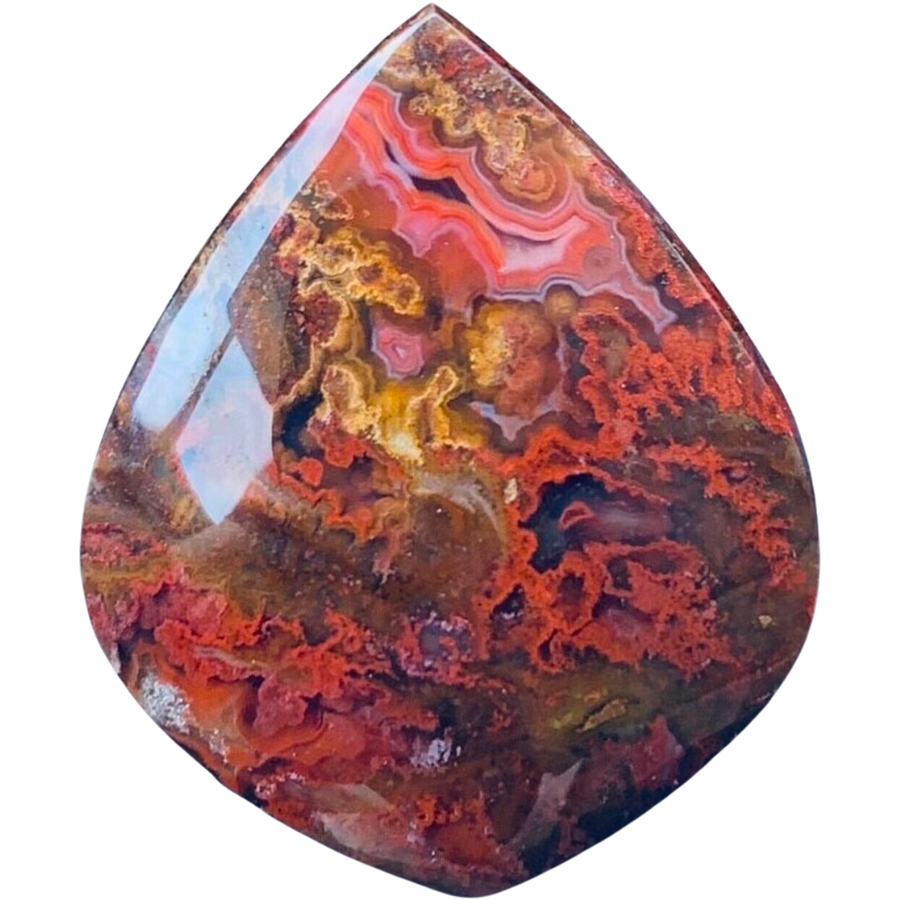
Plume agate gets its name from its patterns that look like soft, feathery plumes. These plumes can be in all sorts of colors: red, black, green, or yellow, set against a translucent or opaque background.
The way these plumes seem to float in the stone makes it look like a frozen underwater scene or like feathers caught in a breeze.
The plumes are made of minerals like manganese or iron oxide, which get trapped in the silica during the agate’s formation and create the feathery patterns.
The price of plume agate can vary depending on how clear and intricate the patterns are. The more detailed and colorful the plumes, the more the stone is usually worth.
Picture Agate (Scenic Agate)
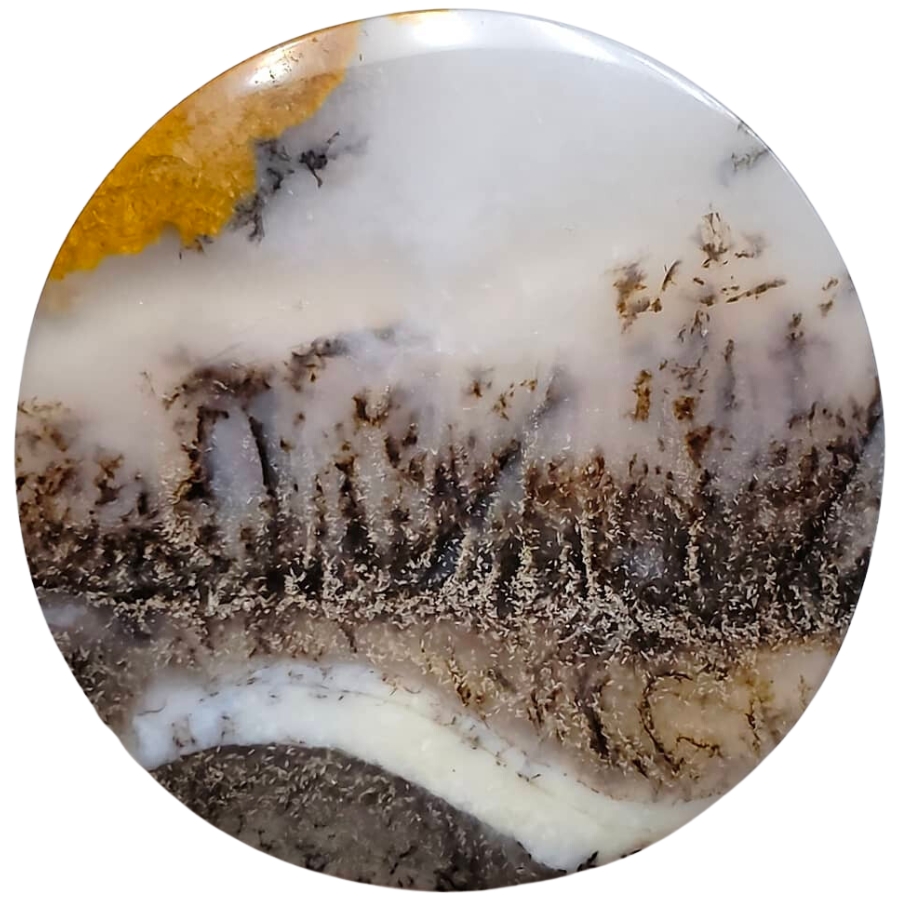
Picture agate is like a snapshot of nature captured in stone because it looks like it has pictures or scenes right inside it.
These “pictures” are actually natural patterns that resemble landscapes, mountains, trees, or even skies. They are usually in different shades of brown, white, and gray against a more translucent background.
The different patterns in picture agate or what’s also called scenic agate are made by various minerals in the water filled with silica that forms it.
If you’re thinking, “What is picture agate worth?“, its value comes from how distinct, clear, and detailed the natural “pictures” are.
Turritella Agate
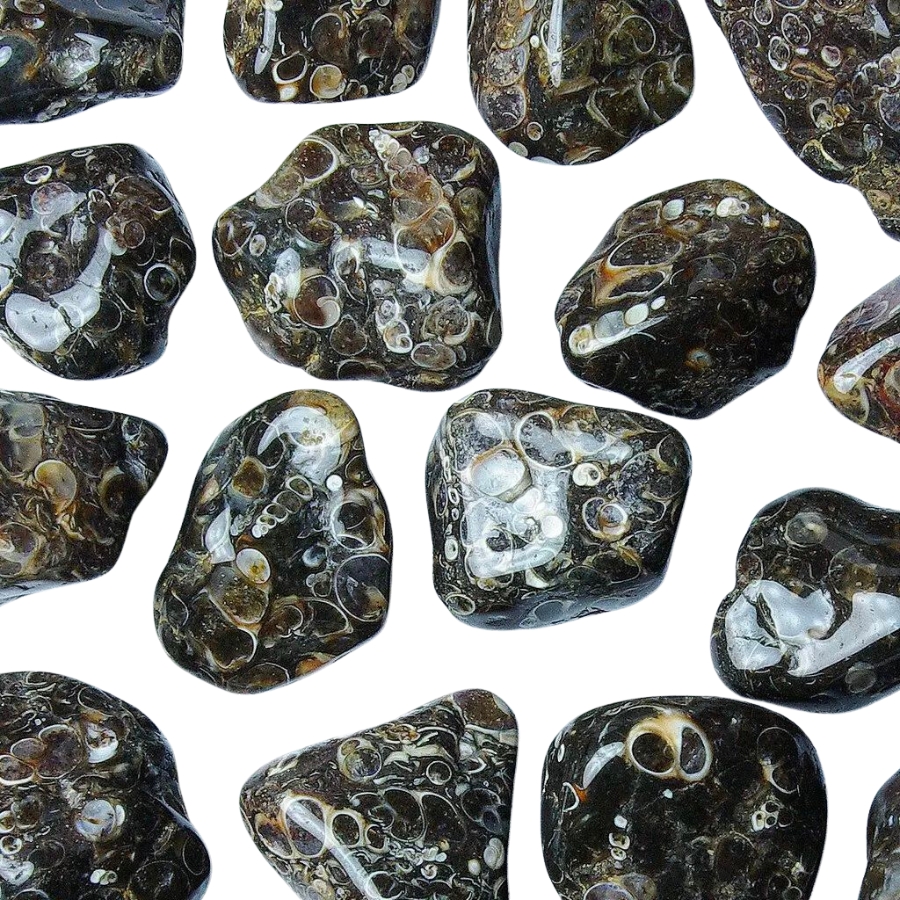
Turritella agate is not your typical agate because it’s full of fossilized snail shells! The shells belong to a creature called Turritella, a type of sea snail.
These shells are tightly packed and create a pattern that looks like a bunch of tiny, swirling towers. The background of the agate is usually a dark, earthy color, which makes the white or cream-colored snail shells really pop.
Over millions of years, these snail shells got buried in sediment and eventually became fossilized. As time went on, silica-rich water flowed through the sediment, turning it into the agate we see today.
The value of turritella agate comes from its unique blend of geology and history. More than a pretty stone, it’s a piece of ancient life preserved in rock.
Fairburn Agate
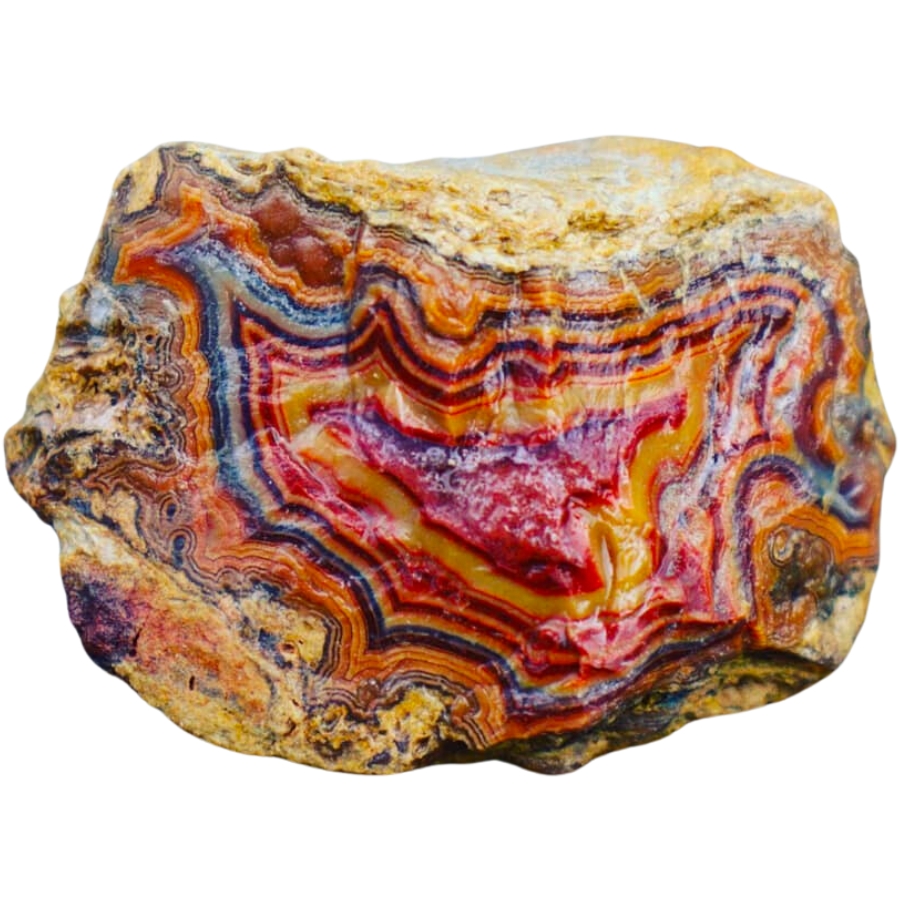
Known for its intricate patterns and bold colors, Fairburn agate is another fascinating type of agate. It usually has bands and swirls of different colors like red, yellow, orange, brown, and sometimes even pink or purple.
What’s special about these patterns is they often look like they’re in layers, creating a 3D effect. It’s like looking at a landscape made of stone.
It’s named after a place called Fairburn in South Dakota. This gives a clue about where it was first discovered.
People value Fairburn agate for the skill it takes to cut and polish it, which makes the patterns and colors really stand out.
Sagenite Agate
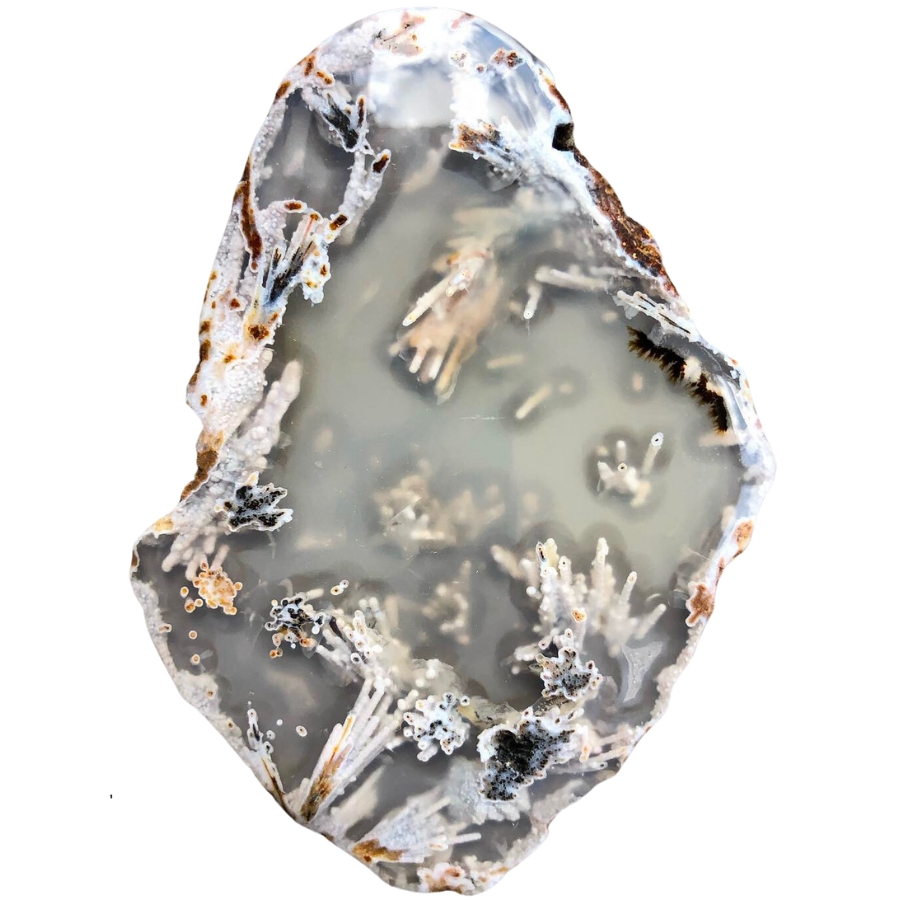
Sagenite agate has needle-like inclusions that look like tiny sprays of crystals inside it. They can be gold, silver, black, or even green, and they spread out in all directions, creating an amazing pattern.
The base of the agate is usually translucent, which lets you see these intricate needle patterns clearly.
These patterns are actually other minerals, like rutile or goethite, that get trapped inside the forming agate. These minerals grow in a crystal shape, looking like needles or hair.
Sagenite agate is often used in jewelry and other decorative items, with some people thinking that its needle patterns look like fireworks or starbursts.
Tree Agate

Tree agate, as its name suggests, looks like it’s got tiny trees or branches inside it. These tree-like patterns are usually green and spread out against a white or light gray background.
The green patterns aren’t actual trees, though. They’re made of minerals like chlorite or manganese.
Each piece of tree agate is different. You won’t find two that are exactly the same. It’s valued for its looks and it’s often used in jewelry and decorations.
The key factors in our recommendations are:
- The deep experience and understanding of our team about the area
- Recommendations from local groups and clubs
- How easy it is to get the a particular location
- Safety and potential hazards when collecting
- Weighing private and public locations
- The ability for both experienced and novice agate enthusiasts to find great samples
With these factors in mind we’ve been able to put together a fantastic list that just about anyone can use!
Kids. Beginners. Pros. Doesn’t matter. This book has become the go-to because it works for everyone.
Magy put it bluntly: “Identify rocks, crystals and minerals is so easy now!”
That’s not by accident, the photos are crisp, the callouts are simple, and the design is rugged enough to throw in a backpack without worrying. Whether it’s your first geode or your hundredth, this guide keeps the fun part simple: finding more treasures.
The Best Spots To Find Agates in Kentucky
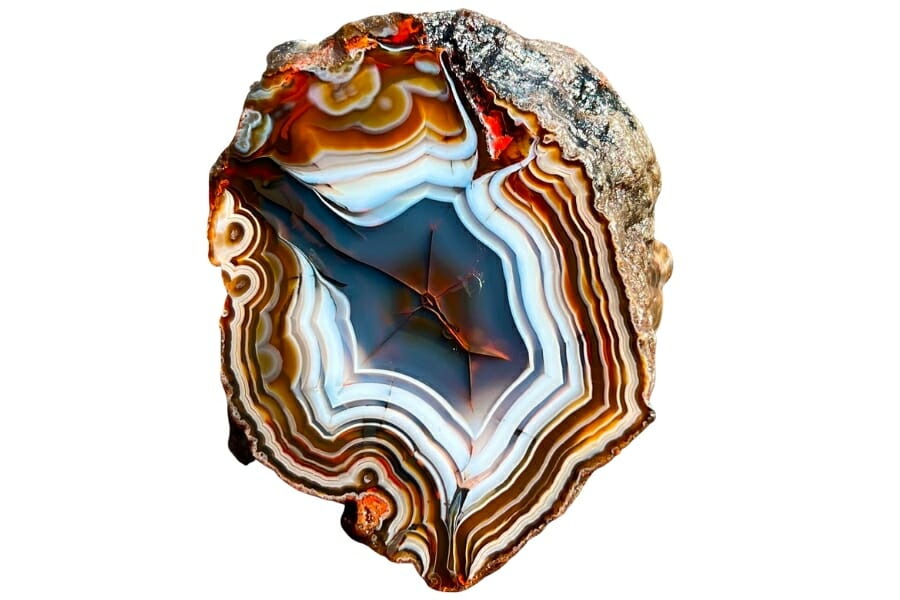
With our astounding geological landscape, it’s no wonder that there are many great gem mine sites in Kentucky. And if you’re specifically looking for agates, below are our favorite spots where you can find them:
Always Confirm Access and Collection Rules!
Before heading out to any of the locations on our list you need to confirm access requirements and collection rules for both public and private locations directly with the location. We haven’t personally verified every location and the access requirements and collection rules often change without notice.
Many of the locations we mention will not allow collecting but are still great places for those who love to find beautiful rocks and minerals in the wild without keeping them. We also can’t guarantee you will find anything in these locations since they are constantly changing.
Always get updated information directly from the source ahead of time to ensure responsible rockhounding. If you want even more current options it’s always a good idea to contact local rock and mineral clubs and groups
The Knobs

The Knobs is an interesting region that’s almost like a series of big, rounded hills or mini-mountains. They form a crescent shape that stretches from the Ohio River in the north all the way down to Tennessee.
These hills are like natural staircases. They rise up from the flat Bluegrass region in the center of our state and lead you to the Appalachian Plateau in the east. This makes The Knobs a sort of transition zone between the flatlands and the mountains.
Made mostly of resistant rocks like sandstone and siltstone, The Knobs are one of the best places to find Kentucky agates.
What’s even better is that the region is well connected with roads, and it’s not too far from major cities like Louisville, so getting here is pretty easy. But before you head out, make sure to get familiar with the local collecting guidelines of Kentucky.
Where we found agates in The Knobs
If you’re exploring The Knobs, keep your eyes peeled around the waterways and rocky outcrops where you have better chances of finding Kentucky agates.
Station Camp Creek
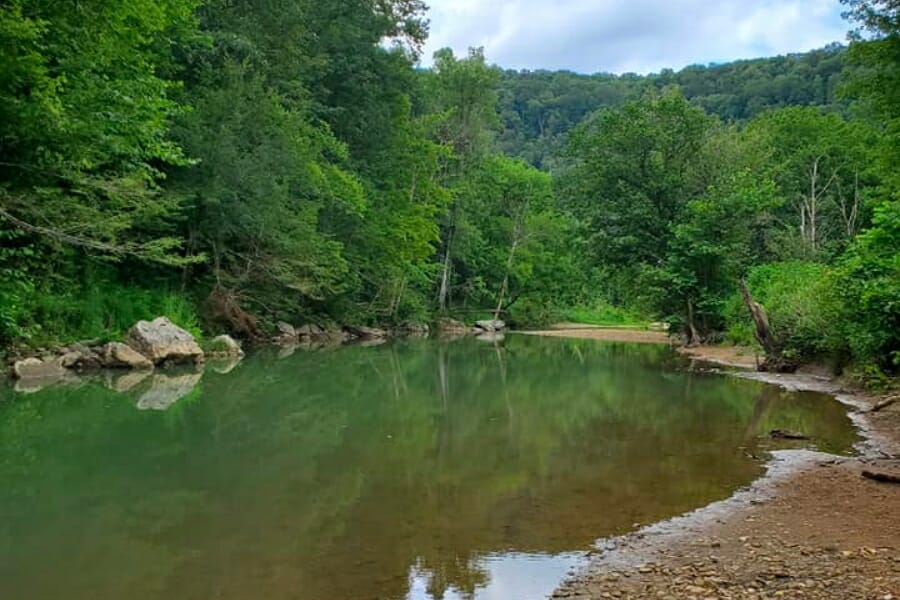
Station Camp Creek is a sparkling waterway that weaves its way through Estill County and is surrounded by lush landscapes, rolling hills, and dense forests.
The creek itself has been shaped over time by the flow of water, creating lots of nooks and crannies perfect for rockhounds! Meanwhile, the terrain around it is a mix of dense green woods and rocky outcrops.
Going here is a breeze. Roads are well-maintained and signs are clear, making it easy for both locals and visitors. Just remember to be respectful of private properties and always ensure you have the necessary permits to explore.
Where we found agates in Station Camp Creek
If you’re exploring the area of Station Camp Creek for agates, make sure to check the rocky spots and gravelly patches near the water.
How to find agates along a creek
Here is a great video about how to find a lot of agates along creek beds in Kentucky:
Pryorsburg
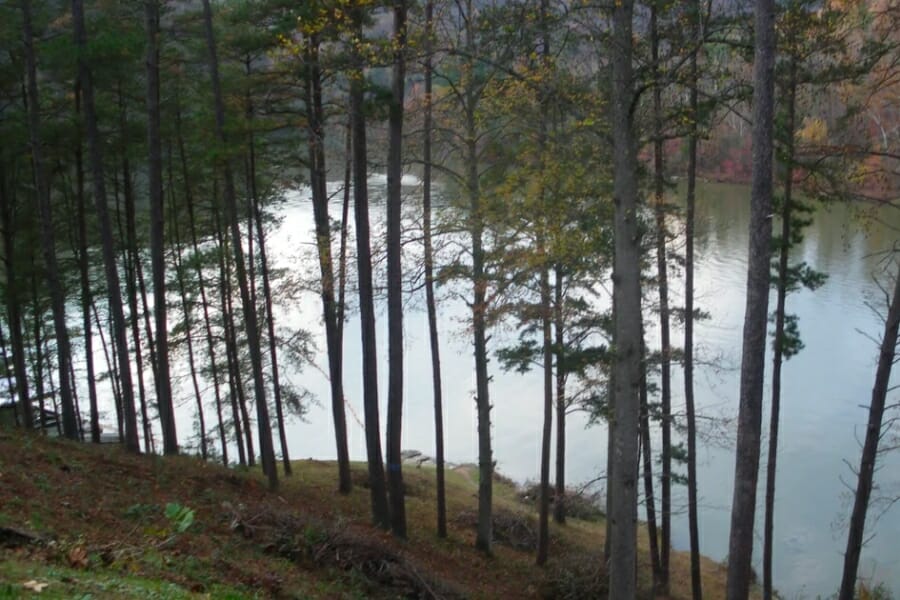
Pryorsburg is a quaint little gem nestled in Graves County. With a charm that’s hard to miss, it’s surrounded by rolling landscapes. Green fields stretch out like nature’s carpet, occasionally interrupted by patches of dense woods.
The terrain around this spot isn’t just flat farmlands; it also has its fair share of gentle hills and valleys. Geologically speaking, this part of our state has seen a lot of action over time, from the effects of ancient seas to the shaping hands of rivers and glaciers.
Because of this, Pryorsburg and its surrounding areas are known to have deposits of agate. And if you want to go agate hunting here, you’re in for a breezy trip! It’s well-connected by roads, and it’s not too far off the main highways.
Where we found agates in Pryorsburg
Explore the area of Pryorsburg just north on US-45 to uncover precious agate samples.
Grassy Creek
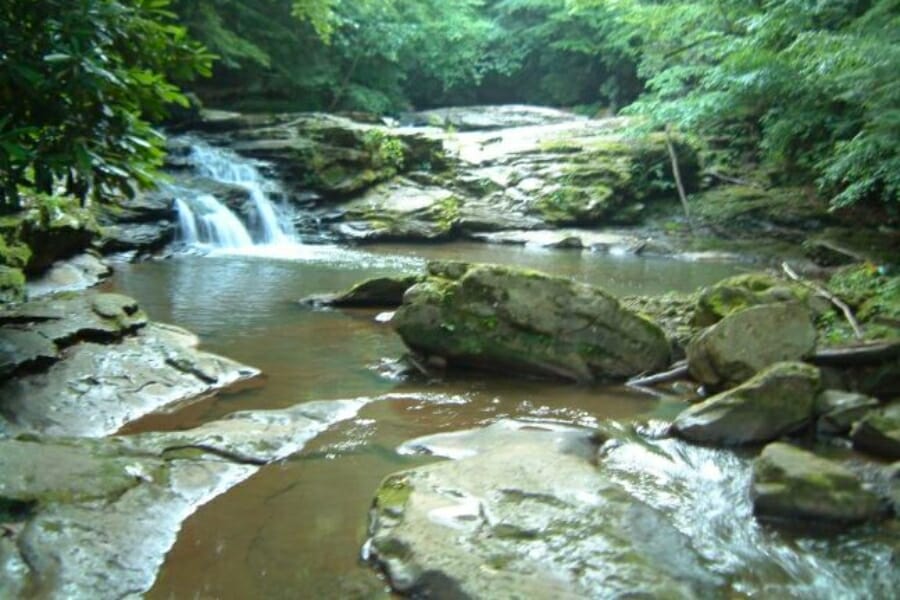
Grassy Creek is a beautiful representation of our state’s diverse geography. The creek flows through several counties, providing an ever-changing scenery from the gently sloping plains to the more rugged terrains.
With its surrounding landscapes, this place is truly picturesque! Its waters cut through a mix of lush meadows, dense woodlands, and rocky outcroppings. Grassy Creek also hides some real gems, one of which is agate.
Accessing this spot is relatively simple. It’s connected by local roads, and its proximity to larger towns and highways makes it a convenient destination.
Where we found agates in Grassy Creek
The best spot in Grassy Creek to look for agates are often near rocky outcrops and along the creek bed.
Eddyville
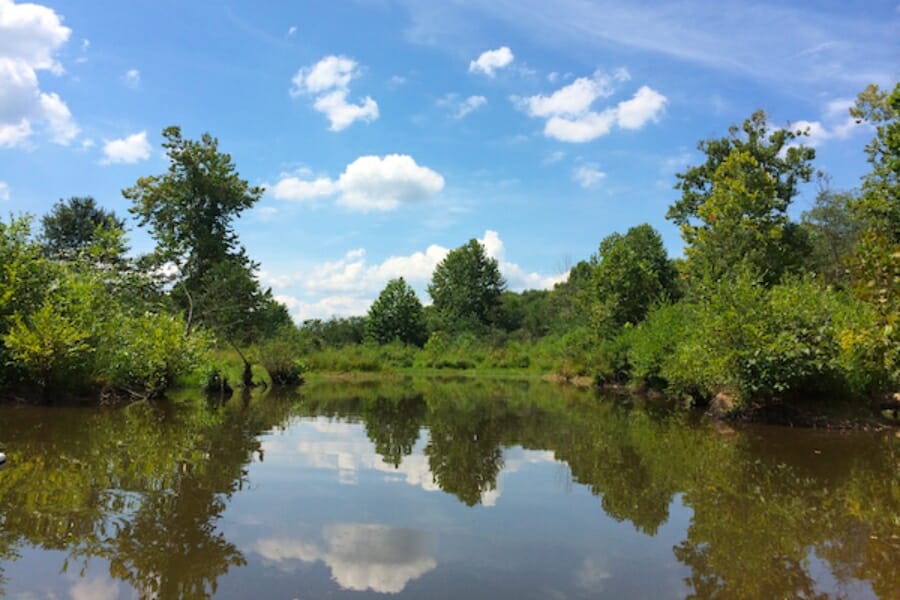
Situated in Lyon County, Eddyville stands on the banks of the Cumberland River, offering picturesque water views that blend seamlessly with its verdant landscapes.
This place has a mix of flatlands and gentle hills, which are often cloaked in stretches of forests or adorned with tranquil lakes and ponds.
Over the ages, the combination of the Cumberland River’s flowing waters and the area’s native rock types has created an intriguing underground tapestry. Among the rock layers, sedimentary formations, primarily limestone, dominate the scene. These ancient rocks are known to harbor agates.
The best thing is that reaching Eddyville is hassle-free. It’s well-connected with major roads, and its location near the Interstate makes it easily accessible for travelers.
Where we found agates in Eddyville
You can find agate by exploring and searching through the gravel pits, road cuts, and excavations of Eddyville.
Other Great Places To Find Agates in Kentucky
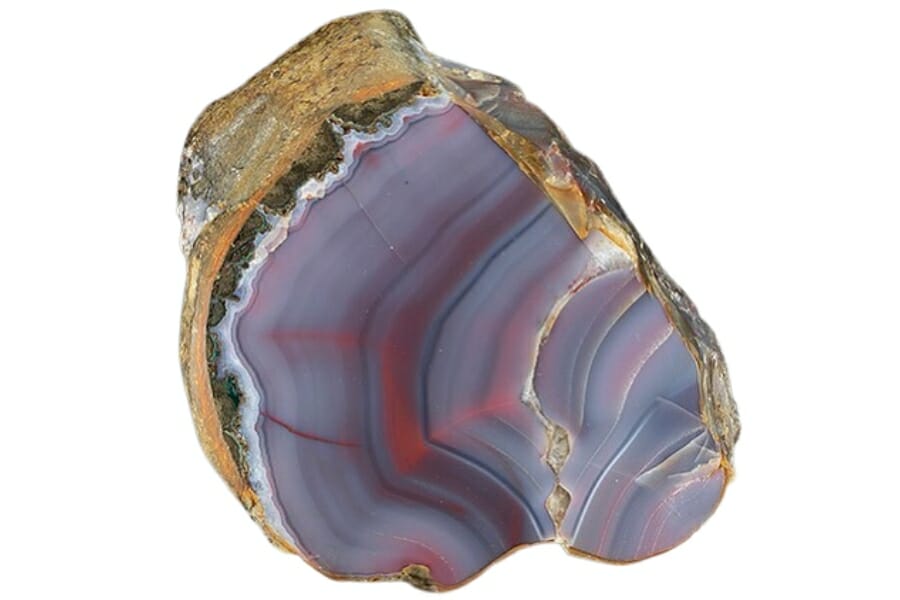
If you’re looking for more spots that you can explore to find agates in Kentucky, you can also opt to visit the places we’ve listed below.
Our recommendations by county
| County | Location |
| Estill | Renfro and Borden formations |
| Graves | Area gravel and clay pits of Farmington, Hickory, Sedalia, Viola |
| Graves | Area clay pits of Mayfield |
| Madison | Big Hill |
| Metcalfe | Edmonton area |
Additional areas you can find agates
Sometimes, agates can be challenging to find even if you’re in a place where other rockhounds have found them. If you can relate to this, make sure to pay attention to these additional areas where these natural treasures usually hide:
Streams and Creeks
As water flows in streams and creeks, it wears away the land, carrying with it soil, sand, and rocks. This helps uncover the hardy stones lying beneath, such as agates.
Over time, these agates tumble and roll downstream, getting polished along the way. They often settle in places where the water slows down, like gravel bars or inner curves. That’s why streams and creeks are great locations for agate hunting!
Rivers and River Banks
Rivers and their banks are like nature’s conveyor belts, showcasing a variety of hidden geological wonders. As rivers flow, they grind and erode the land, bringing with them a mix of rocks and minerals.
Agates, being tough and resistant to wear, often get unearthed by this constant water action. As the river journeys onward, these agates are tumbled, rounded, and sometimes even polished by the water and other rocks, making them easier to spot.
Sediment Deposits
Sediment deposits are like nature’s treasure troves for rock lovers! When rivers, streams, or even wind carry tiny bits of rocks, dirt, and minerals, they often drop them in special spots, creating these deposits.
Because agates are hard and durable, they can resist wear and tear much better than softer rocks. So, while softer materials break down over time, the tough agates remain here.
Common Agate-Hunting Questions

Before starting your search for agates, allow us to answer some of the most common questions when it comes to agate hunting in Kentucky:
Is it illegal to collect agate in Kentucky?
Generally speaking, it’s legal to collect agates in Kentucky for as long as you do it in designated collecting sites in compliance with our state’s local guidelines.
Also, make sure you’re aware of any area-specific rules and regulations, as well as environmental and safety protocols in the area you will explore. Secure any necessary permits, too, before starting your search.
The Best Places To Buy Agates In Kentucky

Agate hunting is as exciting and thrilling as it is tiring and exhausting, so if you want a more relaxed way of getting your hands on these natural treasures, you can visit our local agate shops in Kentucky, such as the following:
- Big Mike’s Rock Shop – 566 Old Mammoth Cave Rd, Cave City, KY 42127
- Little Big Gem Mine & Rock Shop – 1000 KY-524, La Grange, KY 40031
- Moon Mountain Gems – 205 W Water St, Flemingsburg, KY 41041
- Nice Rock Shop – 311 Broadway St, Paducah, KY 42001
- Rose Art Collectables – 377 JDB Spur Rd, Russell Springs, KY 42642
- SunStones – 107 S Bayly Ave, Louisville, KY 40206
If you have any recommendations for our list please leave a comment below!



